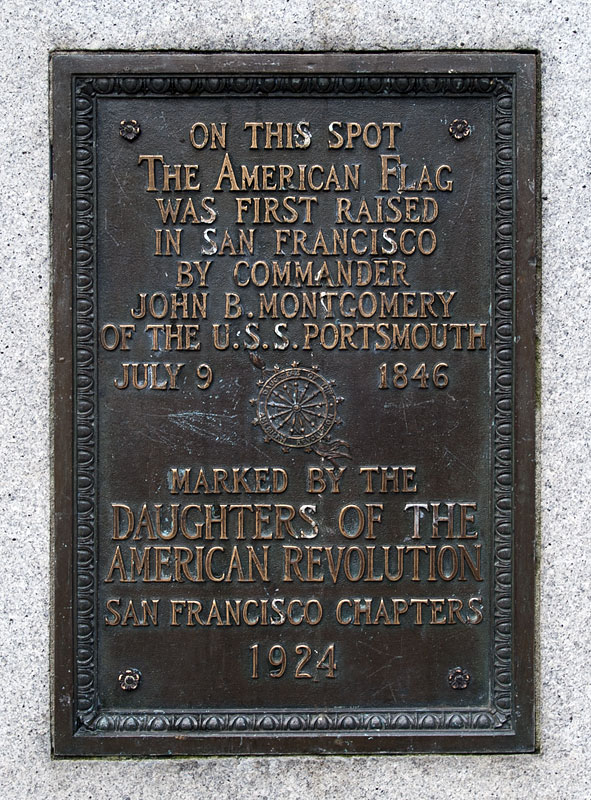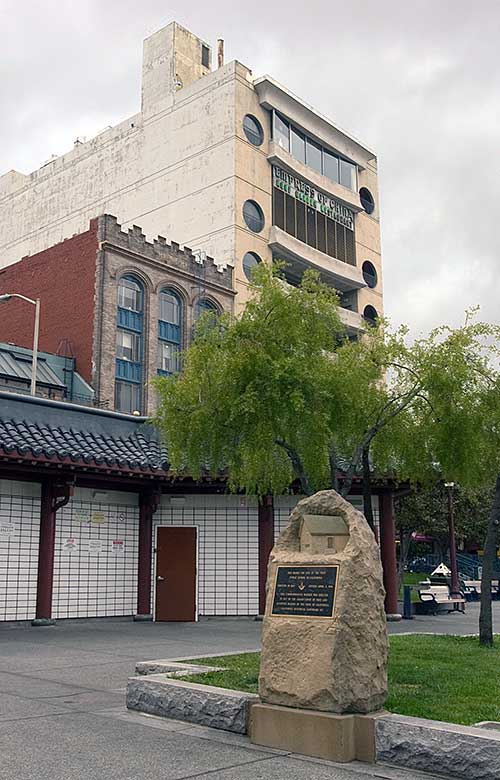As part of our Cultural Feast book club, we knew we wanted to cover Chinese culture - the only question was scope since we could easily spend the whole year on it given how rich Chinese history and culture are. We decided to focus on San Francisco - it is especially vital as the first landing point for Asian immigrants (see our Angel Island field trip), as well as being the oldest Chinese community and largest Chinatown outside Asia. We were blessed to have members who grew up in Chinatown who could guide us. With their guidance, we put together the following field trip.
Stop #1: Portsmouth Square
Chinatown can be intimidating to drive around - thankfully there is a central garage, Portsmouth Square Garage, which costs $4/h. Additionally, it was free for the first 2 hours when we visited during Luna New Year! Families taking public transport would get off at Rose Pak MUNI station. Portsmouth Square would be our base to walk around Chinatown, but first we started with a scavenger hunt to explore Portsmouth Square's history - we searched for traces of events including:
Other historical notes about Portsmouth Square: The discovery of gold was first announced here in 1848, and Robert Louis Stevenson lived nearby in 1879-1880.
Stop #2: Chinese Railroad Workers' History Center
Dr. Gordon Chang has written an excellent book detailing the harrowing experiences of the Chinese railroad workers in laying the western section of the Transcontinental Railroad. However, their contributions have not been acknowledged until recently. From the book description, "..those of them who survived this perilous effort would suffer a different kind of death—a historical one, as they were pushed first to the margins of American life and then to the fringes of public memory."
(Due to intensity of some of the memoirs, this is better for high schoolers. For younger readers, we recommend "Coolies" by Yin and Soentpiet- it is beautifully illustrated and warmly told).
As part of recovering a fuller perspective, we were looking forward to exploring the Chinese Railroad Workers' History Center which is just down the street from Portsmouth Square at 653 Kearny St,. Unfortunately they were closed when we visited but you can look forward to artifacts from the railroad and descriptions of their lives. As a bonus, it's free though donations are gratefully appreciated.
Stop #3: Walking Grant St to Jackson St
Not quite a stop, but as we walked up Grant St., we could see several Single Room Occupancy (SRO) hotels, though hotel is euphemistic given its dimensions. Per SF.gov, "A typical room in an SRO hotel is a single 100-square foot room with shared bathrooms and kitchen facilities". We asked families to preview these KQED and BoldItalic articles to determine how much to share, but we think it is important to understand/empathize with those living in difficult conditions just a stone's throw away.
We also saw landmarks like the Old Chinese Telephone Exchange, which makes for great photos. In fact, most of Chinatown has "classic" Chinese architecture by design. Per this page from the Bancroft Library in Berkeley: "after the 1906 earthquake and fire reduced Chinatown to smoldering ashes, there was a movement by the Reconstruction Committee to move the Chinese..In an effort to save their community from being uprooted, Chinese leaders convinced municipal leaders and the neighborhood's white landlords that the "New" Chinatown should be rebuilt in a distinctive Oriental style that would attract more tourism and business. The results were the familiar curved eaves, colorful street lanterns, recessed balconies, and gilded facades that we associate with Chinatown".

Stop #4: Golden Gate Cookie Factory
This was more a tourist stop than a cultural/historical stop given that fortune cookies aren't traditionally Chinese, however it is a landmark of Chinatown and the cookies are popular with all ages.
Step #5: Wong Lee Bakery
That said, we tried not to gulp down all the cookies because our next stop was a hidden gem - Wong Lee Bakery at 732 Jackson St. It is a sister bakery to Good Mong Kok which is well known for its dim sum and is always crowded. There was a line at Wong Lee too, but it moved quickly and we were delighted by the variety of common dim sum as well as staples like noodles, all for reasonable prices.
(Following photos courtesy of Yelp - we weren't able to get photos before our families inhaled the food!)
 |
| Don't forget the 蛋挞 ! |
Stop #6: Woh Hei Yuen Park
Our children are troopers who can walk miles for field trips, but we know it's important to get the wiggles out so we had built in some park time. Woh Hei Yuen park, at the corner of Powell and John, was a welcome oasis after the crowded streets. The children started running around, tossing a football which had mysteriously popped up out from nowhere.
Adults chatted about our next steps - some of us decided to walk a few blocks over for a quick visit to the San Francisco Cable Car Museum on 1201 Mason St.One of our young students was so charmed by the cable cars, he insisted on waving goodbye to every cable car that came by.
Another recommendation for homeschool families is the San Francisco Chinatown Library on 1135 Powell. Families can apply for a library card as long as they are California residents and the SFPL system often has electronic resources that aren't available in the SMCL system.
Stop #7: Cumberland Presbyterian Church
Our last stop was a meeting with the youth coordinator of Cumberland Presbyterian Church at 865 Jackson St. It is a multilingual church with deep roots, dating back to 1894. We were touched by the Lord's faithfulness in starting it from small beginnings (a store front rental) to its current size (two campuses - downtown San Francisco and Daly City). Throughout the years, it has served its community, e.g. a Chinese school for families who wanted to retain their Chinese roots. It has also risen to the multi-cultural challenge - it runs English, Mandarin and Cantonese services.
San Francisco tends to evoke strong associations, many negative, e.g. doom loop, homelessness, and lawlessness. Certainly we were careful during our walk, and for the most part it was like any other city with its residents going around their day shopping and chatting. The positive and negative impressions don't cancel each other out - they are part of its fabric - but the last picture of the church overlooking the city was a fitting finale for our field trip. It reminds us that the Lord is sovereign above all, and of His faithfulness in sustaining His people throughout their challenges. Having been saved by faith, what remains for His people is to "do the good works that He has prepared in advance for us to do" (Ephesians 2:10) and to wait faithfully for Him.
Notes for future exploration
- If you are touring Chinatown on your own, consider the free walking tours offered by the San Francisco Public Library.
- We would like to highlight Chinatown Alleyway Tours, a non-profit group. Tours are run by students, many of whom grew up in Chinatown, and who can give insider experiences of its culture and history. Costs go toward improving the alleyway district, and are (as of Feb 2024) $20/adult, $10/student.
- Hang Ah Tea Room lays claim to be the oldest dim sum restaurant in America.
















No comments:
Post a Comment